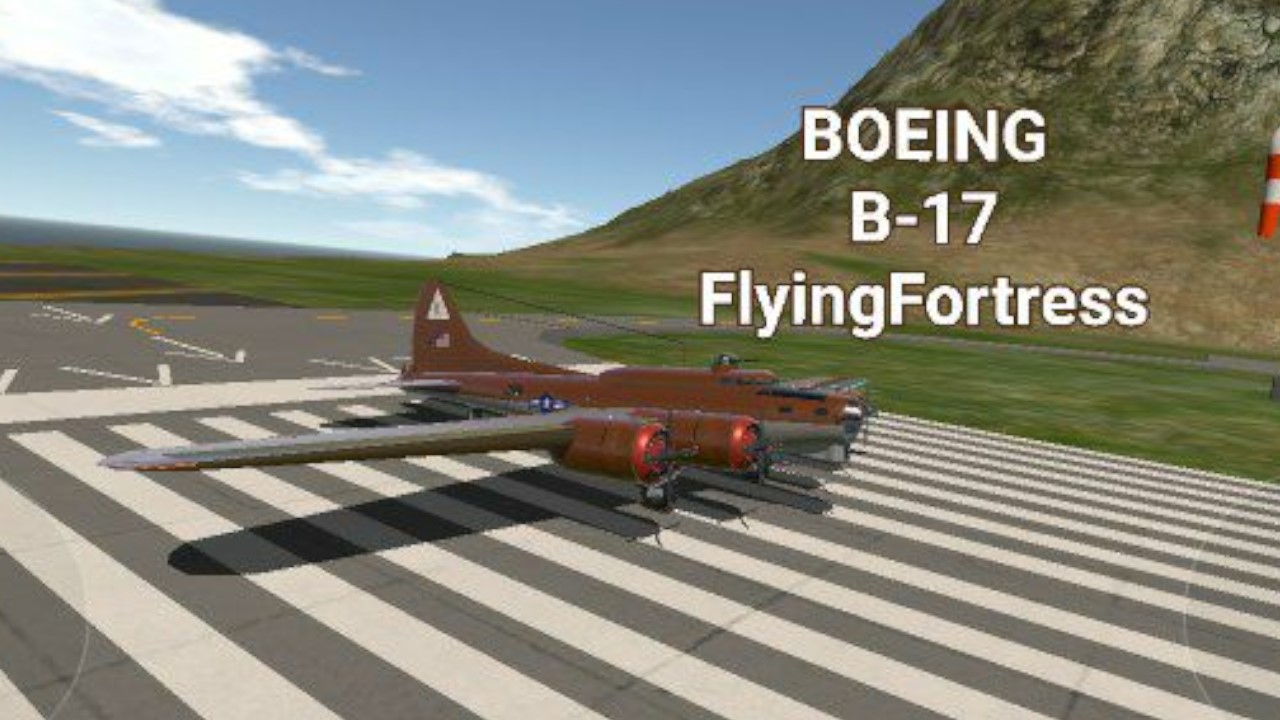C L E A R---A L L---H I D D E N---P A R T
HISTORY (wiki)
The Boeing B-17 Flying Fortress is a four-engined heavy bomber developed in the 1930s for the United States Army Air Corps (USAAC). Competing against Douglas and Martin for a contract to build 200 bombers, the Boeing entry (prototype Model 299/XB-17) outperformed both competitors and exceeded the Air Corps' performance specifications. Although Boeing lost the contract (to the Douglas B-18 Bolo) because the prototype crashed, the Air Corps ordered 13 more B-17s for further evaluation. From its introduction in 1938, the B-17 Flying Fortress evolved through numerous design advances,[4][5] becoming the third-most produced bomber of all time, behind the four-engined Consolidated B-24 Liberator and the multirole, twin-engined Junkers Ju 88.
The B-17 was primarily employed by the USAAF in the daylight strategic bombing campaign of World War II against German industrial, military and civilian targets. The United States Eighth Air Force, based at many airfields in central, eastern and southern England, and the Fifteenth Air Force, based in Italy, complemented the RAF Bomber Command's night-time area bombing in the Combined Bomber Offensive to help secure air superiority over the cities, factories and battlefields of Western Europe in preparation for the invasion of France in 1944.[6] The B-17 also participated to a lesser extent in the Pacific War, early in World War II, where it conducted raids against Japanese shipping and airfields.[7]
From its prewar inception, the USAAC (by June 1941, the USAAF) promoted the aircraft as a strategic weapon; it was a relatively fast, high-flying, long-range bomber with heavy defensive armament at the expense of bombload. It developed a reputation for toughness based upon stories and photos of badly damaged B-17s safely returning to base. The B-17 dropped more bombs than any other U.S. aircraft in World War II. Of approximately 1.5 million tons of bombs dropped on Nazi Germany and its occupied territories by U.S. aircraft, over 640 000 tons (42.6%) were dropped from B-17s.[8] In addition to its role as a bomber, the B-17 was also employed as a transport, antisubmarine aircraft, drone controller, and search-and-rescue aircraft.
As of October 2019, nine aircraft remain airworthy, though none of them were ever flown in combat. Dozens more are in storage or on static display. The oldest of these is a D-series flown in combat in the Pacific on the first day of the United States' involvement in World War II.
CONTROL
1.AG-8 Engine
2.AG-2. Car Engine
3.AG-3 Gunner
4.AG-4 Bomb Bay
5.AG-5 Auto Pilot
6.AG-6 Light
7.VTOL = Flaps
8.Trim = car engine direction
FEATURES
1.Cockpit Interior (not fully not sure vr friendly)
2.Camera Aim (cuz it ww2 bomber)
3.Bomb Sight (thanks @SnoWFLakE0S https://www.simpleplanes.com/u/SnoWFLakE0s)
4.Auto Pilot
NOT FINAL VERSION
Upvote if u like and enjoy :)
Specifications
Spotlights
- Mainthedevil 3.0 years ago
- Bryan5 3.0 years ago
- Titaninfernal1 3.0 years ago
- WorstPlaneIEverMake 3.0 years ago
- Flanker715 3.0 years ago
General Characteristics
- Successors 1 airplane(s)
- Created On Android
- Wingspan 130.4ft (39.8m)
- Length 86.7ft (26.4m)
- Height 29.8ft (9.1m)
- Empty Weight N/A
- Loaded Weight 130,338lbs (59,120kg)
Performance
- Horse Power/Weight Ratio 0.306
- Wing Loading 54.2lbs/ft2 (264.7kg/m2)
- Wing Area 2,403.9ft2 (223.3m2)
- Drag Points 41598
Parts
- Number of Parts 492
- Control Surfaces 5
- Performance Cost 2,973






Note
CLEAR ALL HIDDEN PART
NEXT MY 2ND PLANE:
B-29 SUPERFORTRESS WITH FATMAN+LITTLEBOY
Y E S S B - 2 9 W I T H N U K E
aaaaa I was completely fooled
NOT FINAL VERSION
Next is
1.Interrior
2.Better ball turret
3.Auto&manual aim code
4.Better wing (if i can)
5.VR friendly (if i can)
this plane is very good i love it, its easy tocontrol and i like the camera-aim option but can you do an external camera-aiming veiw (like war thunder)
Cool
@IDNSatya This might end up being the best B17
@WorstPlaneIEverMake for thumbnail
Why does the part need to be "hidden"